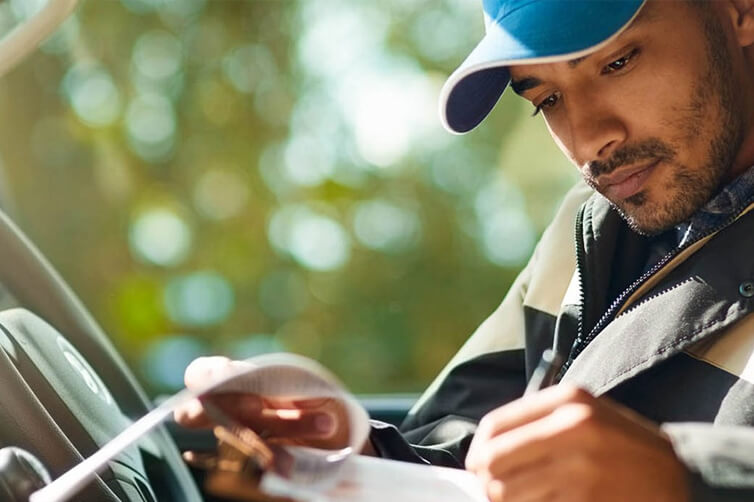
Is it just the Amazon effect?
Almost certainly. Thanks to the retail giant’s granular attention to delivery flexibility and returns simplicity, consumers expect more from all their preferred retailers.
With so much choice at their fingertips, it’s bad news if brands fail to deliver on their promises — consumers will simply go elsewhere. A survey of 2,000 UK consumers showed that 83% of online shoppers would not shop with a retailer they have had a bad delivery or returns experience with. That’s very little margin for error.
A premium post-purchase experience isn’t just about speedy delivery. It’s essential that retailers go above and beyond to meet customer needs and expectations.
So, how can retailers use the last mile to stand out from the crowd?
PERSONALISATION
As it stands, personalisation rarely exists in the last mile of ecommerce. You know what that means? Opportunity.
With its Prime service, Amazon has taken delivery personalisation to the next level. It doesn’t take much to understand that customers generally have preferred criteria, without the need to declare it every time. The checkout and delivery process is seamless and frictionless. Yet there’s a wide gap between Amazon and the rest of the online retail world.
So, to set yourself apart from the bulk of ecommerce players, give your customers more options at the checkout. There’s so much more to offer than single day or am/pm delivery. Let them choose their preferred delivery location, speed and time slot. Also, set these preferences for next time, you’ll win their hearts and keep them coming back time again. Simple.
GIVE INFORMATION UP FRONT
People like to know what’s going on. This is never more true of a parcel delivery.
Right now, this communication is generally led by the consumer. Retailers receive hundreds of Where Is My Order (WISMO) calls a day, asking for more information. These calls are not only inconvenient, they are incredibly costly.
Thing is, the data is right there. It needn’t be a reactive situation.
Nail the last mile experience by being transparent with your customers. Warn them if there’s a problem. Proactive communication flips a customer from feeling disappointed at best (or downright outraged at worst) to valued. You can’t always prevent a mistake, but you can manage it.
“Delivery is a linear process. It really shouldn’t be hard to provide information up front. If a step gets broken, it’s easy to see what’s gone wrong. Unfortunately, carriers aren’t good at using this data to update customers. Its an opportunity for retailers – predict failure and manage customer expectations.”
Andy Hill, Sales Director, Sorted
BE (TRULY) LOCAL
Be honest. When it comes to your last mile service, have you considered what works best for your customers, rather than what suits your own operations?
The younger, fast fashion-loving generation has a different attitude to life than even millennial shoppers. It took us 10 years of ecommerce just to get to next day delivery. Now, consumers have Deliveroo-like expectations. Soon, they’ll expect a pair of shoes in half an hour.
Whilst this might not be easy right now, retail is moving in that direction. And fast. To stay ahead, give your customers hyper-local and convenient pickup options, or granular delivery slots that allow them to specify their preferred choice to the nth degree. They will thank you in the long run.
“Right now, mobile tech expectations are not being tempered by reality. Much like instant information, younger customers expect products instantly, too. Soon we will see technology in the West like WeChat in China. Customers can scan an individual item like someone’s coat, and find out exactly where to find it. That’s what shopping will soon look like.”
Andy Hill, Sales Director, Sorted
TALK THE TALK
You already know that your brand voice and discourse is essential for converting sales. Why should that be any different post-purchase?
But when you send your customers off to your delivery partner’s website, you’re in their hands. Carrier language can be somewhat… mechanical. And guess what? Your customers aren’t keen.
This can be even more inconsistent if you have a multi-carrier strategy, as the experience and tone of voice can vary from carrier to carrier. Instead, why not keep your customers in your own brand environment? There can be a big win for retailers who own the buyer experience from end-to-end.
The takeaway? Use the last mile to keep your customers immersed in your brand. It will keep them engaged and excited to shop from you in future.
“The way a retailer speaks to the consumer is important, so it should always be in their hands. Carriers talk carrier language. It’s often disjointed so retailers are providing inconsistent experiences. It can impact the quality of their service.”
Andy Hill, Sales Director, Sorted
BE REALISTIC
Don’t over promise and under deliver.
When it comes to owning the last mile, it pays to be cautious. If you make wild promises that you can’t fulfill, your probability of retaining a consumer’s loyalty will drop. At the same time, your cost to serve that customer will increase. It doesn’t take a mathematician to work out that’s a bad place to be.
MAKE SMART TECH INVESTMENTS
Right now, 80-90% of retail tech investment is focused on the pre-order experience. But this fails to address the importance of customer loyalty and brand ownership the far side of the checkout. With a simple checkout plugin like SortedHERO, your customer can choose and personalise their delivery or collection options and, you guessed it, go away feeling empowered and valued.
With AI-powered delivery tracking software like SortedREACT, all your delivery data is in one place, gathered in real time, no matter how many carriers you use. This means you can be transparent with your customers if something goes wrong. All in your own brand voice and environment, of course.
The bottom line? Say goodbye to rigid last-mile delivery experiences and robotic carrier-speak. Say hello to repeat sales.